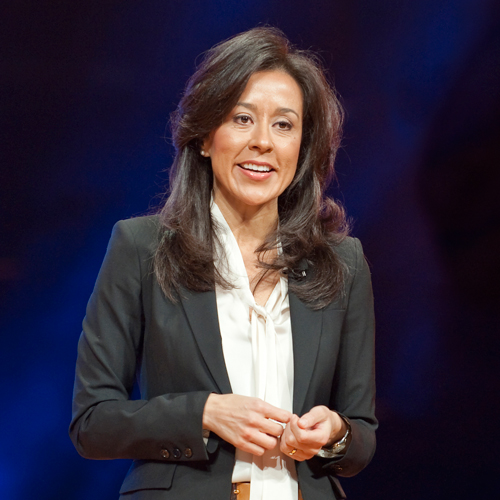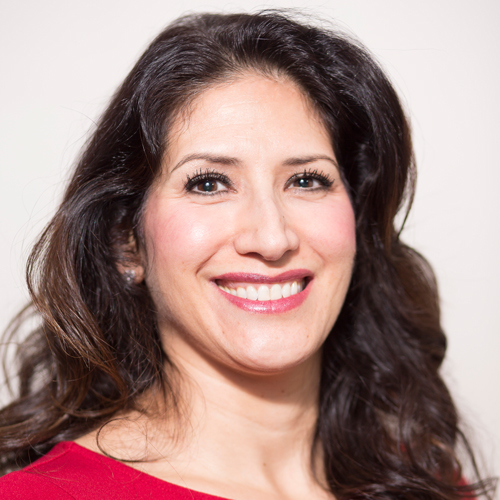Maria Olson has done a little bit of everything, but it’s not hard to find a common thread that runs through her entire career. Prior to joining computer-storage and data-management giant NetApp in 2011, she ran global business development for SAP, formed strategic alliances at a startup, and worked in procurement and supply-chain management at HP. And while she’s been involved in the front and back ends of small, medium, and large organizations, Olson says the key to each position has been her ability to manage relationships. She sits down with Hispanic Executive to share lessons learned, how she encourages innovation, and the opportunities available for Latinas who pursue careers in high tech.

You seem to have a knack for networking and building relationships. Where does that come from?
It started at a young age. I was born in Southern California, and when I was six, we moved to a border town. My home was in California, but my school was in Mexico, and I had to cross the border twice every day. We had uniforms, but I showed up in a hand-made Raggedy Ann dress on day one.
You could say I stood out, especially with my blonde hair and blue eyes. I barely spoke Spanish, and going through that experience taught me how to cope with adversity and change. It also taught me how to build relationships with people who might not think they have anything in common with me. Ultimately, it laid the foundation for who I’ve become professionally.
Have you been able to leverage your multicultural upbringing in the business world?
Absolutely. When I was in procurement at HP, I was tasked with working closely with the Mexican international procurement office. We sourced both parts and materials from many other regions of the world. The position provided me with the opportunity to work on a team with people from Mexico City and Guadalajara who shared many of my own cultural experiences. Of course, being fluent in both English and Spanish was also an advantage. But the bottom line is that I think my multicultural upbringing has enabled me to see many different points of view. And it’s definitely an advantage in what I do now: managing alliances. Every partner, every person brings a unique perspective and experience to any given situation. I try very hard to understand where they are coming from so that we can work together in an optimal way.
What were some career highlights before NetApp?
During my 12 years at HP, I had many opportunities, but one incredibly exciting challenge was taking on the opportunity to work in their emerging technology group in product management.
What was that like?
It was a good fit for me. I gained a great deal of experience and visibility because I was in a small division where everyone had to do everything. I was talking to customers, understanding their needs, doing press, and launching products. In 2000, I was offered the chance to work in alliances at a startup, and that’s when I discovered what I really love.
When did you come to NetApp?
In 2011. I knew some of the VPs and executives and agreed to meet with them. I remember sitting in the room and listening as they spoke. They were so excited about what they were doing as a company that it was contagious.
It was a lateral move for you. Why pass up the chance for a promotion?
It comes down to culture, opportunity, people, and vision. You don’t get to check all those boxes everywhere, and I knew NetApp was set up to do something special.
Describe what NetApp does differently.
NetApp has a long history of innovation, and as an enterprise company, we’re putting together storage and data-management solutions. Basically, we’re taking all the goodness we’ve built with a rich customer base and providing more features and solutions as customers choose between on-site, cloud, hosted, and hybrid data solutions. I believe our data-fabric strategy delivers the most comprehensive data-management solution in the industry, delivering end-to-end solutions for customers. We are growing both organically and by acquiring leading technology companies that complement our portfolio. Our recent acquisition announcement of all-flash storage leader SolidFire is a perfect example.
Can you give me an overview of your role as VP of global and strategic alliances?
I was hired to manage strategic alliances and key partner relationships, which I did for 18 months before stepping up to manage the entire global and strategic alliances team. I have a team of 25, and we work with about 220 technology partners. In this role, I need to be able to draw upon my background of building relationships and understanding different cultures and personalities.
What makes you excited about the world of cloud computing right now?
I’ve never seen a higher level of disruption in IT than is occurring right now. There are more challenges and more choices facing customers today than ever before. We are working with traditional and brand-new technology partners who are helping us revolutionize how we approach development. This is creating a new, emerging ecosystem. We expect approximately 60 percent of that system to change over the next three years, so my goal is to create a safe environment where our teams can engage and work on a three-year strategy knowing that the world is evolving.
What is your strategy for creating that environment?
We have to get comfortable with uncertainty and empower people to make recommendations and bets knowing they won’t be 100-percent right all the time. I have to let them know that while we won’t always have all the answers, won’t always be perfect, that it will be okay. We’ll re-evaluate and revisit and get better as we learn more. This is where true learning begins.
“I’ve never seen a higher level of disruption in IT than is occurring right now. There are more challenges and more choices facing customers today than ever before.”
Maria Olson
What are the most pressing issues you focus on today?
Anything that helps our clients get to the cloud on their terms and plug into public platforms or manage multi-vendor platforms. We help them get where they want to go quickly and easily with greater control and efficiency. We want people to choose NetApp because it’s end-to-end and not just one part of a solution.
In the corporate world of high tech, do you feel that being a woman from a multicultural background is an asset or a liability?
The depth my type of background has given me can’t be underestimated. Everything in our business is globalized, so the immersion I experienced at a very young age was critical. I’ve been able to navigate complex relationships and negotiate big deals, and I continue to learn how to do it better by watching how some of the best and largest companies operate.
But women and Latinos still face major challenges, correct?
Without a doubt. Look at STEM. Women have a lot of the focus, yet results are getting worse. Companies have big initiatives for women in leadership, but the numbers aren’t there, and there’s still pay inequity.
What needs to be done from your vantage point?
Equality won’t be achieved by women on our own. We need both men and women executives sponsoring some of these initiatives. I’m lucky enough to work for a company that believes diversity is important, but that doesn’t happen everywhere.
It sounds like an issue near and dear to your heart. How do you help drive change?
I speak at events and host alliance groups here. I engage daily on social media to add another dimension to the conversation and to help scale the message. I make myself available as a mentor and participate in women-in-technology initiatives.
What’s next for you at NetApp?
There’s never been a more exciting time in the industry. NetApp has a great portfolio, and we’re in a position to move ahead into whatever the new reality is. I know that the foundation the company has built, along with the people we attract, will take us far.

